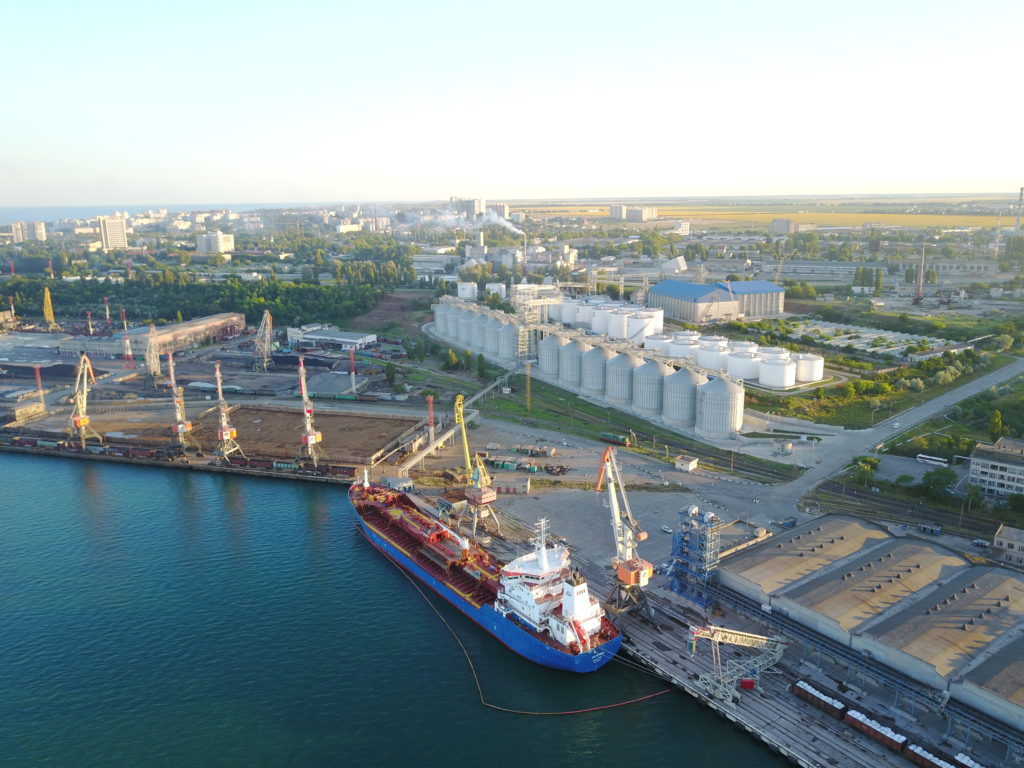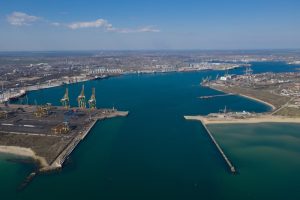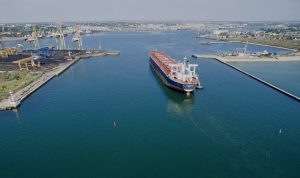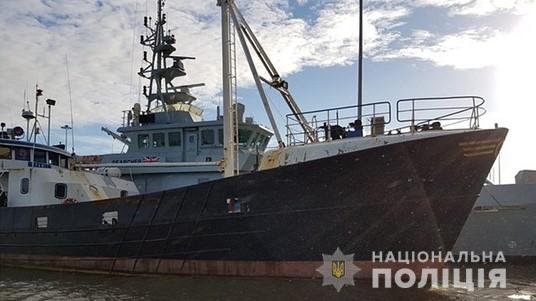Port “Ch”: unknown story
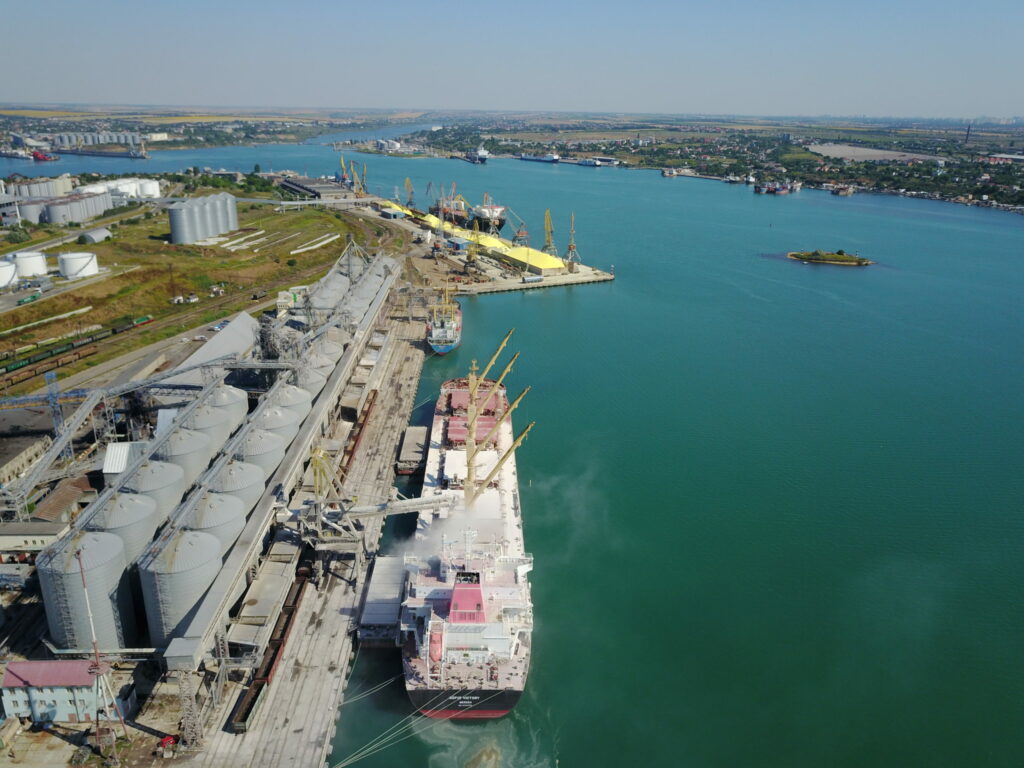
Most of the ports of Ukraine are the country’s trade gates, and some are also unique in that they are city-forming. There is the seaport “Chornomorsk” among them, more than half a century has passed since its creation. Having survived more than one crisis due to political turmoil in the state, the port remains the center of economic prosperity for a city with a population of almost 100 thousand people.
Since the end of the 18th century, after the conquest of the Northern Black Sea region by Russian troops, many peasants from the inner provinces of Russia, as well as German colonists, settled near the Sukhoi Estuary. They settled in separate farmsteads in one or two yards. These farms, scattered in the seaside steppe, are known as Bugovo, Bugovy Farms (from the surname of the first settler – Major Andrey Buga, a Greek by origin).
In 1927, the Bugovy Farms were renamed into Ilyichevsky Farms (Ilyichevka farm).
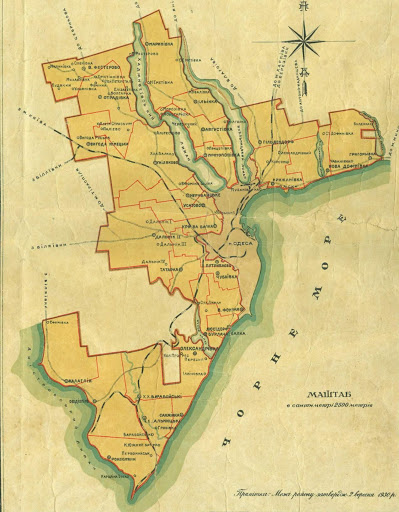
In the second half of the 1940s, the construction of shipyard № 490 began in the bay of the Sukhoi Estuary. A settlement of shipbuilders, which included a significant part of Ilyichevka, arose here as well. In 1952, by the Decree of the Presidium of the Supreme Soviet of the Ukrainian SSR, the workers’ settlement was named Ilyichevsk, and the settlement itself was assigned to the subordination of the Odesa City Council.
On the initiative of the head of the Black Sea Shipping Company (BLASCO) Alexei Danchenko, in 1956 the history of the Illichivsk Commercial Sea Port began. In connection with the rapid development of foreign trade relations of the USSR and the growing volumes of cargo flows, the construction of port transshipment capacities began in the area of the Sukhoi Estuary – southwest of Odesa on the basis of the cargo area of the port of Odesa.

On October 25th, 1957, the head of the BLASCO issued order № 8/733 “On the construction of a port on the Sukhoi Estuary.” Thus, the foundations have been laid for the creation of all services and divisions that carried out the functioning of an independent transport company, and the preparation of drafts of the port staffing table began. In December 1957, the Vaigach dredger cut through the sand spit and connected the Sukhoi Estuary with the sea, and in summer the first 336 meters of the quay front were put into operation and 6 portal cranes were installed.
On August 5th, 1958, the motorvessel Ukraine entered the port water area and moored near its only berth. Then the operation of the future enterprise, connected with the main activity, which is cargo handling, began. According to the results of work in 1958, the transshipment of cargoes amounted to 335 thousand tons. The cargo transshipment was made up of coal and construction materials: concrete, sand, timber.
After 2 years, the cargo turnover amounted to 2.6 million tons.
The enterprise received the status of an independent commercial port of the first category with the assignment of the name “Illichivsk” later – on January 31, 1961.
On January 30, 1961, the order of the Minister of the Marine Fleet № 21 was promulgated “To transfer the loading and unloading area of the port of Odesa on the Sukhoi Estuary into an independent sea trade port of the 1st category”.






Pakhom Makarenko (1961) was appointed the first head of the port.
Previously, Makarenko headed the port of Odesa (since 1939), where he was caught by the war.
In the heroic defense of the city, the uninterrupted operation of the port, “the only way of life connecting the garrison of the besieged city with the mainland”, was of decisive importance. Led by Pakhom Mikhailovich, an unprecedented evacuation in the history of wars of the troops of the Odesa defense region to the Crimea was carried out in the first half of October 1941.
In the same October 1941, Pakhom Makarenko was appointed Deputy Head of the Black Sea-Azov Shipping Company and the Plenipotentiary of the People’s Commissar of the Navy in the Black Sea-Azov Region. During the defense of Sevastopol, Novorossiysk, Kerch, Makarenko took an active part in organizing the work of the fleet, ports for the transport of troops, ammunition, equipment, wounded, and the evacuation of the civilian population.
In the fall of 1942, Makarenko was transferred to the post of the head of the Caspflot Shipping Company, main task of which was to provide uninterrupted supplies of everything that was necessary for the Soviet armies that fought on the southern flank of the Soviet-German front (Stalingrad and North Caucasian directions). As head of the Caspian Shipping Company, Pakhom Mikhailovich worked until April 1944.
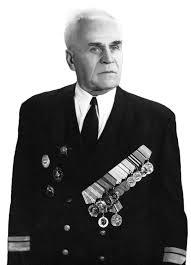
After the liberation of Odesa, Makarenko was appointed Head of the Black Sea Shipping Company. In the conditions of the ongoing war, the head of the Black Sea seaport actively took up the restoration of ports (first of all, Odesa), shipyards, return from evacuation of port workers and shiprepairers.
In 1959 Makarenko returned to the Black Sea. During the year (1961-62) he was in charge of the Ilyichevsk port, sailing as a captain on the vessels Vasily Golovin, Kostroma, etc. In 1964 he went into a well-deserved retirement.

In 1967, due to an increase in cargo turnover, the port received the highest category. At that time, vessels with rubber, jute, tea, parquet, caustic soda, cotton, pepper, peanuts, shoes, clothing and many other goods are accepted. Machine tools, equipment, cars, construction and agricultural machinery, metal products, mineral fertilizers, coal, ore are shipped for export.
Simultaneously with the new port, the twin city of Chornomorsk was developing, which acquired the status of a city in 1973.
In parallel with the shipyard № 490, which was located between the villages of Bugovo and Aleksandrovka, Ovidiopolsky region of Odesa, the village of Ilyichevsk began to develop actively. By the decision of the USSR government, the construction of the plant was stopped, and the land, along with the water area of the Sukhoi Estuary, was transferred to the Black Sea Shipping Company. The construction of the port began there first. For communication between Ilyichevsk and Odesa, a dam was poured, along which an asphalt road was laid. Later, a part of the road passing through the Sukhoi Estuary was dug, as a result of which a western passage was formed into the second ladle of the port water area, where a boat crossing was launched. Over time, a pontoon bridge was put into operation there, connecting the villages of Malaya Dolina and Burlacha Balka.
With an increase in the tonnage of the fleet and the number of vessels through the western passage to the second ladle – for repairing the shipyard and to the ferry complex, the eastern passage to the second ladle was designed and made. The project also provided for the cutting of the second section from the side of Burlacha Balka.
Dredging in the west and east passages caused part of the structure to crumble, forming an island with a surface of just over 100 meters, which became the separation structure of the first and second ladles. Later that island received the popular name “Dam”.

In 1972, the first stage of the automated control system of the port was put into operation in the port, and in 1976 a container terminal with a capacity of 120 thousand containers per year was built.
The port manager issued an order to start transshipment of heavy containers through the terminal.
On November 14th, 1978, the first stage of the international ferry Ilyichevsk – Varna was put into operation: the operation of four ferries, each containing 108 railway wagons, made it possible to handle up to 6 million tons of cargo per year.
In 1980, in the fifth region of the port, the country’s first specialized complex for handling ro-ro vessels with a horizontal loading and unloading method with a 280-meter berth and a warehouse with a capacity of 5,000 vehicles was built and put into operation.
1987 – the construction of an interport base for the repair of large-capacity containers was completed. During that period, the port’s cargo turnover had reached 20 million tons per year – and that was a new record for the port.
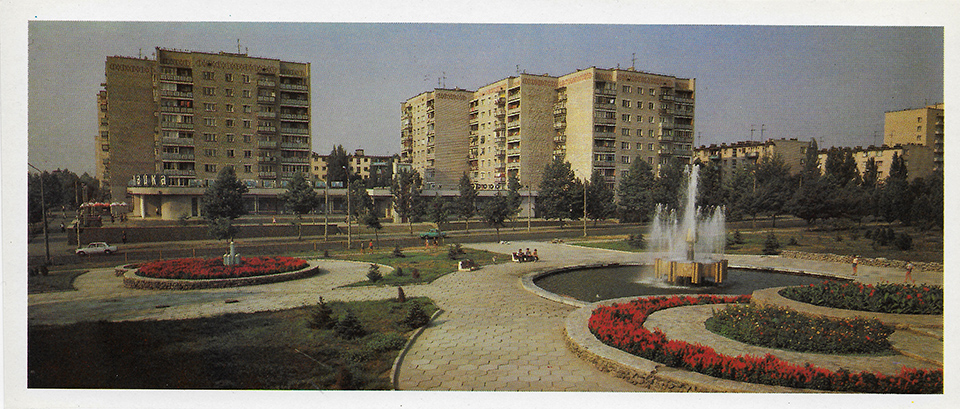
On December 26, 1989, for the first time, the vessels of the port fleet, the tug Titan and the floating crane Bogatyr, went on a foreign trip.
After the reconstruction of the 1st and 2nd berths, as well as adjacent territories, a highly mechanized container terminal with a capacity of 300 thousand containers (TEU) per year was created.
In September 1995, its first stage was commissioned with two berths and three rear universal cranes with a carrying capacity of 45 tons each, and already in 1996 the ferry line Ilyichevsk – Poti was opened, which became the sea part of the Euro-Asian transport corridor (TRACECA).
The construction of a complex for transshipment of mineral fertilizers with a capacity of up to 2.5 million tons was completed. Now it is a Specialized Sulfur Transshipment Complex (port operator – LLC Gamma Transban).
From 1989 to 1993 Mikhail Kuzmenko was the head of the port. In December 1963, he began to work at Illichivsk Commercial Sea Port as a stevedore for the 2nd cargo area. He worked his way up to the head of the port, the position of which he received as a result of open elections in 1989. He headed the port in the most difficult years of the collapse of the USSR. He stubbornly resisted attempts to destroy the port, at the industry level he took an active part in the creation of the first independent Ukrainian Association of Ports (UKRASPO).
In 1996, the port agreed with Transbalkterminal JV LLC on cooperation in the construction and operation of an elevator grain complex. The third party to the agreement was Estron Corporation Ltd., which acted as the investor.
Under this agreement, Transbalkterminal and Estron Corporation Ltd. pledged to build a grain handling complex and, after 35 years of use, give it to the port.

For the first time, the grain transshipment complex in Illichivsk port announced itself in February 1998, in connection with the launch of the first stage with a capacity of three million tons of grain per year. It was the first terminal in the ports of Ukraine, created mainly through investments of the private Cypriot partner company Estron Corporation Ltd, and then Transbalkterminal JV LLC. The total cost of the first and second stages is USD 26 million.
It was the first silo-type port terminal in Ukraine.
In 2001 Estron Corporation Ltd. and the port entered into a revised treaty, according to which the port provided for the installation and operation of the complex concrete site in the rear of berths № 16 and № 17.
And in 2003, an addendum to the new edition of the agreement was signed, according to which the exclusive and indivisible ownership of the grain handling complex belongs to Estron Corporation Ltd., which was controlled by Odesa businessmen Boris Mikhov, Rafael Katinyan and Michael Sargsyan.
The Black Sea fishing port is located in the water area of the port of Chornomorsk.
Since 1946, the Black Sea Fishing Industry Association Antarctica has been one of the strongest and most successful in the USSR. In 1995, Illichivsk Sea Fishing Port was included in the “List of Objects That Do Not Subject to Privatization Due to Their National Significance”, approved by a resolution of the Verkhovna Rada of Ukraine (Parliament). But the privatization of Fishport was already in full swing. Then the documents noted that it was not the port itself that was being privatized, but the Antarctica fishery, of which it was part. To comply with the law, the management made the documents in such a way that the word “port” did not appear anywhere.
Roughly speaking, Antarctica privatized the port for itself, and the state was left with the territory on which it stands. You can be convinced of this by looking at the privatization plan approved by the State Property Fund, which lists the objects that were bought out by the JSC. This list includes two subdivisions: Illichivsk transshipment complex and Engineering and maintenance service, in the name of which the word “port” is omitted.
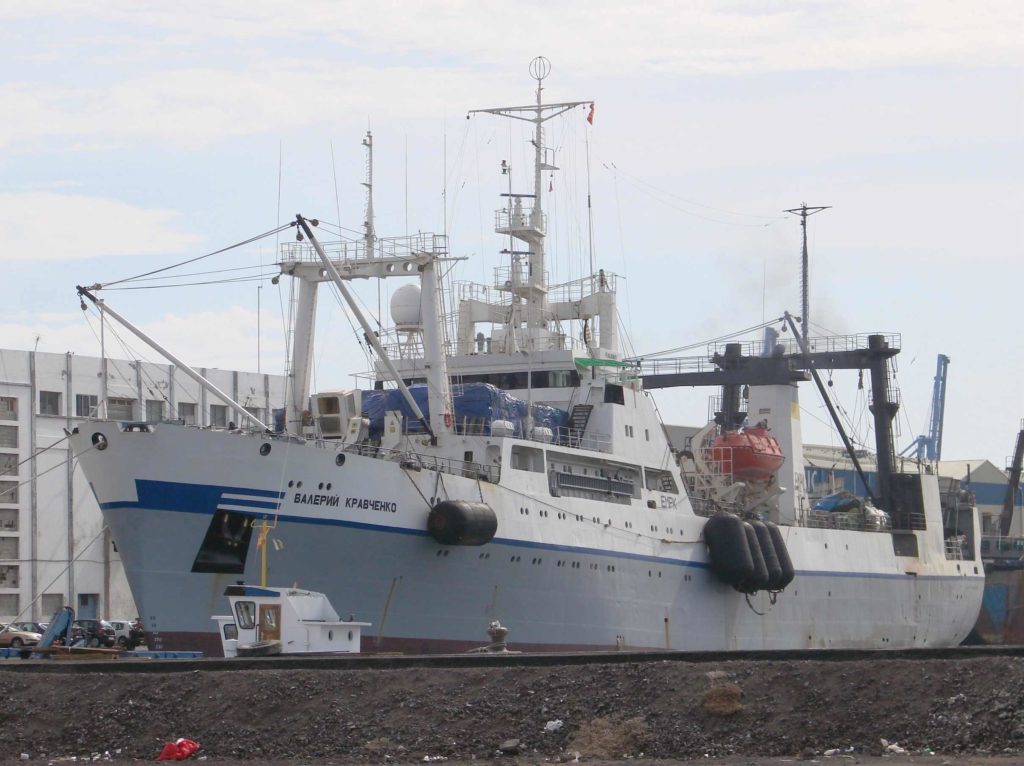
Interesting fact
In 1993, Antarctica was headed by Valery Mikhailovich Kravchenko – young, ambitious, his plans for the development of the company found supporters and inspired people. Kravchenko was a close friend of the founder and editor-in-chief of Vechernaya Gazeta, truth-seeker Boris Derevyanko, who was killed in August 1997 by hitman. On Kravchenko’s initiative, one of Antarctica’s fishing vessels was named after the editor of Vechorka.
And five years later, the director of Antarctica repeated the fate of Boris Fedorovich Derevyanko: he was also killed by hitman.
When the irreparable trawler Boris Derevyanko was sold for scrap metal, at the initiative of Valentin Kobylyansky, General Director of the Kapitan fishing shipping company (Antarctica’s successor), who replaced the deceased Kravchenko, the name of the Vecherka editor was given to another vessel undergoing major overhaul at a shipyard in the Polish city of Szczecin. It is symbolic that on the day the repairs were completed on Boris Derevyanko (in April 2009), another vessel went fishing – Valery Kravchenko, named after the head of Antarctica, who died, like the editor of Vecherka, by hitman hand…

In March 2004, the Illichivsk Fuel Terminal, a transshipment complex with a capacity of 3.23 million tons of oil products per year, began operation at ICSP (Illichivsk Comercial Sea Port).
As a result of the implementation of a set of measures for the development of infrastructure, the port accepted for processing a trans-ocean container ship with a length of 294.1 m and a capacity of 5034 TEU, thereby opening new regular lines of direct transoceanic service connecting the ports of Southeast Asia and Ukraine.
In 2004, ADM and Risoil S.A. built the Illichivsk oil extraction plant.
In the same year, the construction of another oil extraction plant began. To this end, the American corporation Bunge and the Estron Corporation company of businessmen Rafael Katinyan and Michael Sarkesian on a parity basis created a joint venture Eastern Agro Investments Ltd, which became the founder of the “Ukrainian Black Sea Industry”. The Americans pledged to finance the project worth $ 46 million, and their partners provided a sublease for the construction of 5.2 hectares of land for their transshipment terminal in Illichivsk (now Chornomorsk) Commercial Sea Port.
2007 – the plant was launched and merged with Transbalkterminal, which soon became part of Kernel.
2007-2008 – the owners of Bunge and Estron Corporation were disputes in the London Arbitration concerning the fulfillment of the obligations assumed by the Ukrainian side during the creation of the joint venture. The owners of the company decided to sell 50% of the shares of the Ukrainian Black Sea Industry.
2009 – in September, Kernel signed a tolling agreement with the Ukrainian Black Sea Industry to provide the right to process 230 thousand tons of sunflower per year.
2011 – Kernel acquired the asset of the Ukrainian Black Sea Industry. The transaction value is $ 140 million.
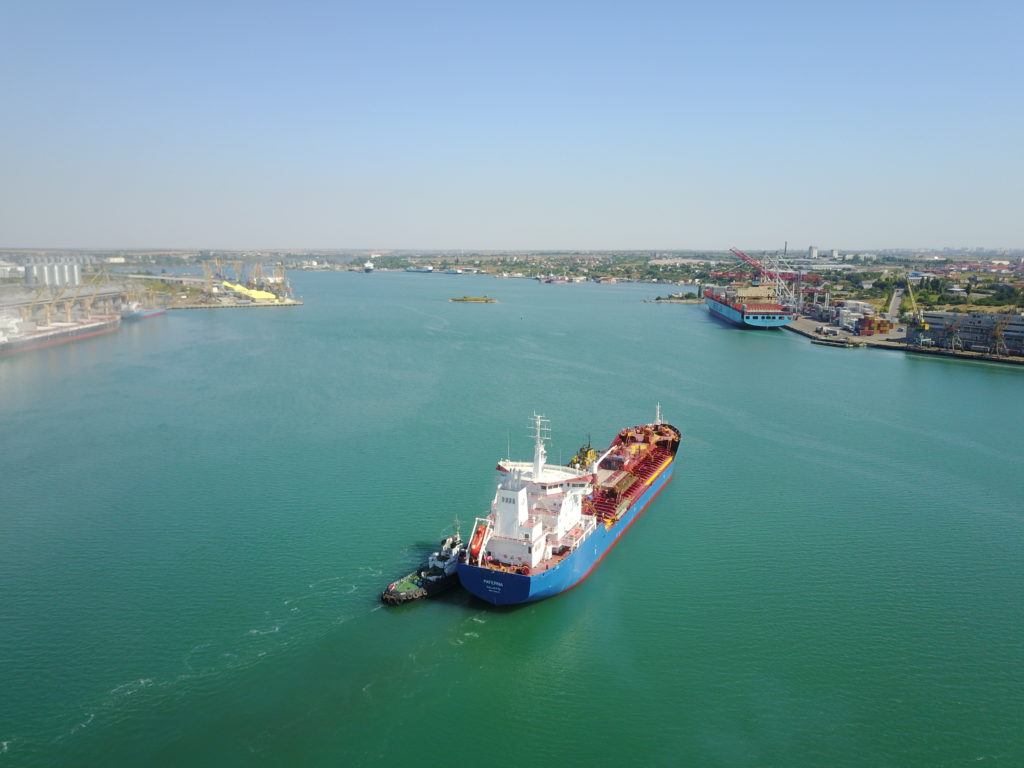
In 2007, the port reached its half-million milestone in container transshipment, having received at that time the status of the №1 container port of Ukraine.
2008: record figures among container ports of Ukraine in container turnover – more than 670 thousand TEU. At the same time, one of the largest exporters of sunflower oil in Ukraine, the Kernel group acquired the Transbalk transshipment terminal, paying $ 100 million for it.
June 13, 2013 – creation of the Administration of Illichivsk Sea Port.
October 28, 2016 – SE “Illichivsk Commercial Sea Port” was renamed into SE ” Chornomorsk Commercial Sea Port”.
In 2018, dredging works began at the Chornomorsk port. They were conducted in the operating water area of the 1st basin and on the approach channel of the Sukhoi Estuary. The USPA invested more than UAH 400 million (145 765 USD) in the project, and already in 2020 the port began accepting large-tonnage vessels with a draft of up to 14.5 m, such as Panamax and post-Panamax. Accordingly, the state stevedore and private port operators working in the port began to load vessels with a deadweight of up to 75 thousand tons and container ships with a capacity of 8 thousand TEU at deep-water berths up to the full capacity.
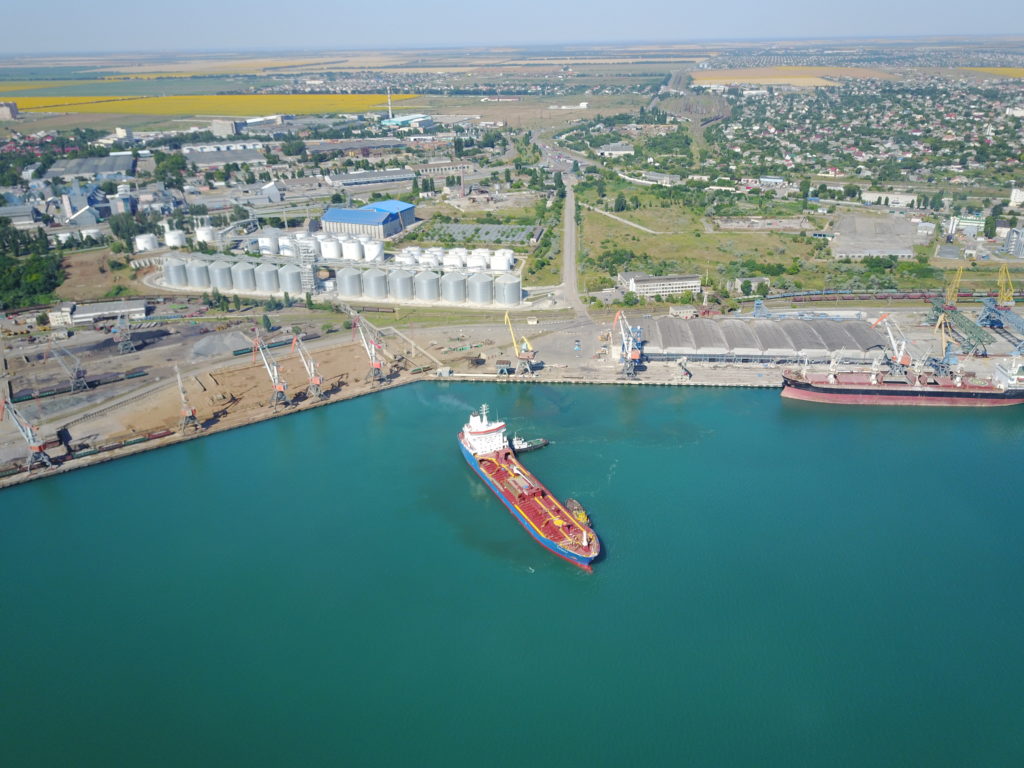
In the port of Chornomorsk there is a unique railway-ferry complex – the only terminal in Ukraine that specializes in servicing railway and auto-ferry lines. In 2019, almost 2 million tons of cargo were handled through the railway-ferry complex. About 25% of that volume was cargo in wagons and about 63% – in TIR heavy vehicles. The port is located at the intersection of several international transport corridors and transit routes. Unfortunately, this potential has not been fully exploited. The main reason is the drop in transit traffic and the global crisis in the world.
According to the results of 2019, the cargo turnover of the seaport of Chornomorsk in the whole water area amounted to 26 million 153 thousand tons, which is 21.4% or 4 million 618 thousand tons more than in 2018. This is the best result of the port’s cargo turnover in the entire history of independent Ukraine. For 8 months of 2020, 15 million 419 thousand tons of cargo were handled in the seaport of Chornomorsk in the whole water area.
In 2020, the total volume of cargo handling in Chornomorsk port through August amounted to almost 13 million tons.
In June 2020, the Ukrainian authorities transferred the Kherson ICC to the concession. In the future plans of the Ministry of Infrastructure – the use of this mechanism in relation to Chornomorsk port, which, undoubtedly, will be a breakthrough in the further development of both the port itself and the entire city of Chornomorsk.
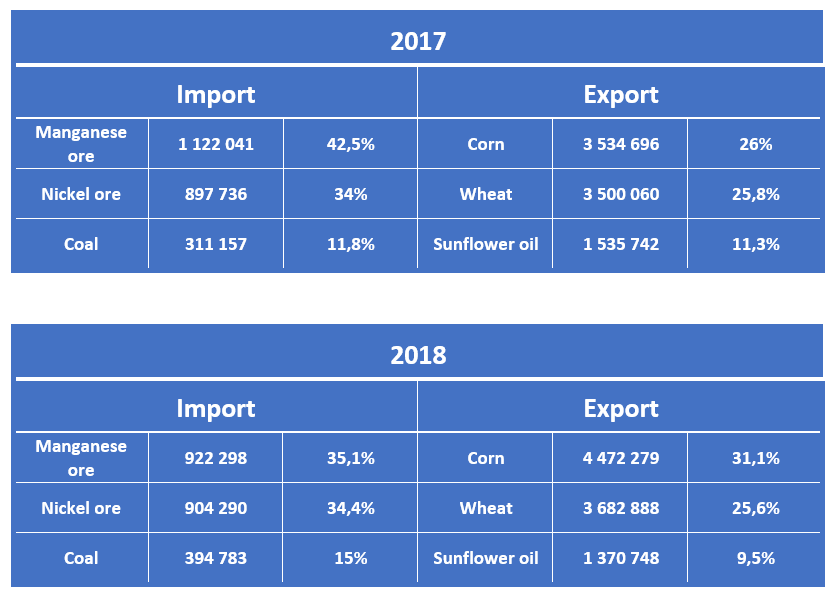
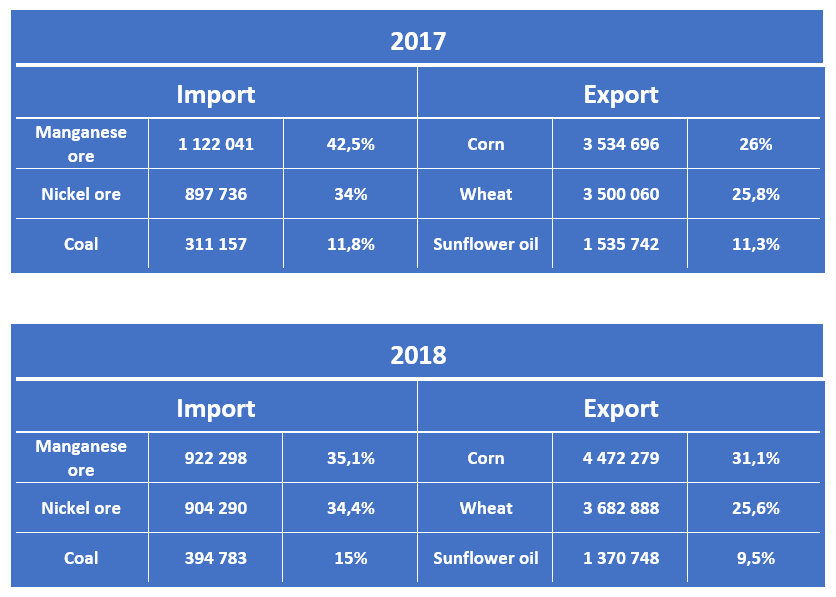
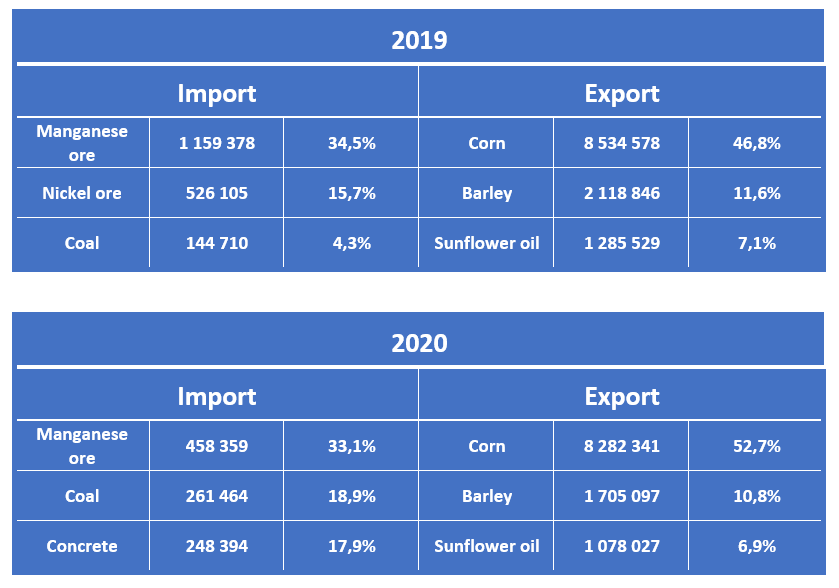
Strategic plan for the development of the port until 2038
– dredging in the port water area, bringing the depth to 15 m;
– stage-by-stage reconstruction of the port berths;
– development of terminals by attracting investors in the framework of the implementation of the Law of Ukraine “On the seaports of Ukraine”;
– development of road and rail infrastructure;
– reconstruction (modernization) of power supply systems.

Reference. Currently, 14 port operators operate in the water area of the seaport of Chornomorsk.
The total capacity of the port is 37.5 million tons of cargo per year, including through the berths of the Chornomorsky branch of the State Enterprise “USPA” – 30 million tons.
The area of the inner water area is 494 hectares.
External road (radius 4.5 miles) – 11535 hectares.
The production area is 300 hectares.
The port is capable of receiving vessels up to 300 m in length.
The number of berths as a whole in the water area is 42, including berths of the Chornomorsk branch “USPA” – 27.
The total length of the cargo berthing front is 7.11 km, including the length of the berthing line of the Chornomorsk branch “USPA” – 5.25 km.
The depths on the approach channel are 16 m, in the water area – from 9.75 to 15 m, near the berths – from 8.9 to 14 m, in the outer roads – from 17.0 to 23.0 m.
The port is served by three railway stations: Chornomorsk-Port, Chornomorsk-Paromnaya and Ksenievo.
